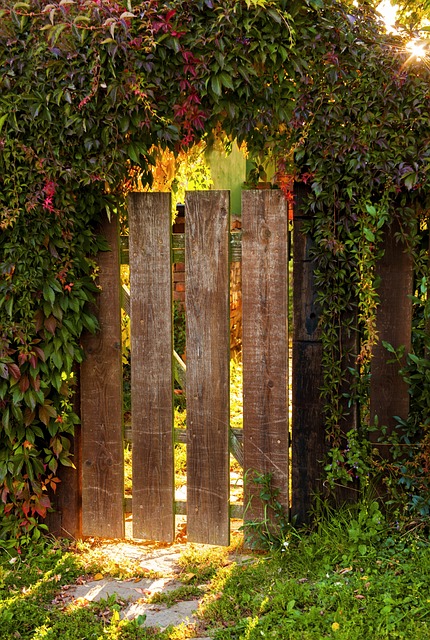Fences act as both functional barriers and aesthetic additions to your outdoor space, and proper maintenance ensures they serve both roles effectively. This article guides you through the process of fence staining and sealing, crucial steps in preserving the beauty and durability of your wooden fences. From understanding the benefits and types of stain to choosing the right color, preparing your fence, applying sealants, and maintaining long-lasting results, we provide essential insights for a vibrant, protected fence.
- Understanding Fence Staining: Benefits and Types
- Preparing Your Wooden Fence for Staining
- Choosing the Right Stain: Color Options & Application
- Sealing for Protection: The Importance and Process
- Maintenance Tips for Long-Lasting Fence Appearance
Understanding Fence Staining: Benefits and Types
Fence staining is a popular method to enhance the appearance and protect wooden fences. It involves applying a colored sealant to the fence’s surface, which can transform an ordinary fence into a visually appealing feature. Understanding the benefits and types of fencing staining is crucial for homeowners looking to invest in this maintenance process.
One of the primary advantages is durability. Staining creates a protective barrier against the elements, including UV rays, rain, and snow, which can fade and damage untreated wood. Regular sealing not only preserves the fence’s aesthetic appeal but also extends its lifespan. Additionally, staining offers a range of customization options with various colors and finishes available to suit different tastes and architectural styles. From natural, subtle tones to bold, vibrant shades, there is a solution for every preference.
Preparing Your Wooden Fence for Staining
Preparing your wooden fence for staining is half the battle won. Start by sweeping or brushing away any loose dirt, debris, and dust from the fence’s surface. This ensures that the stain penetrates properly rather than sitting on top of the wood. Next, inspect the fence for any signs of rot, damaged boards, or peeling paint, which should be repaired before staining. Sanding the fence slightly can also help to create a rougher surface, allowing the stain to adhere better. Make sure the weather conditions are favorable, with no rain predicted for at least 24 hours after preparation to ensure the best results from your staining process.
Choosing the Right Stain: Color Options & Application
When choosing a fence stain, one of the most important considerations is selecting a color that complements your wooden fence’s natural tone and the overall aesthetic of your outdoor space. Stains come in a wide array of colors, from subtle earth tones to bold, vibrant shades. It’s advisable to sample several colors on a small section of your fence to visualize how they look under different lighting conditions, especially during the time of day when your fence is most exposed.
The application process varies depending on the type of stain you choose. Some stains are designed for a quick, even coating, while others require multiple layers and a more meticulous brush or roller technique. Ensure that you follow the manufacturer’s instructions for proper application, including preparing the fence surface by cleaning and sanding as needed. This will ensure an even and long-lasting finish.
Sealing for Protection: The Importance and Process
Sealing is an essential step in fence staining and maintenance, offering much-needed protection for your wooden fences. It creates a barrier between the wood and the elements, preventing moisture, UV rays, and extreme temperatures from penetrating and causing damage. Over time, these environmental factors can weaken the wood, leading to splits, cracks, and even rot.
The process involves applying a protective coating, typically a seal or stain, which bonds with the wood’s surface. This not only enhances the visual appeal but also prolongs the lifespan of the fence. There are various types of seals available, each offering different levels of protection and aesthetics. Water-based seals are popular for their low odor and quick drying time, while oil-based options provide deeper colors and longer-lasting protection against water damage. The application process typically requires brushing or rolling on the sealant, ensuring even coverage for optimal results.
Maintenance Tips for Long-Lasting Fence Appearance
Regular maintenance is key to keeping your wooden fence looking its best for years to come. Start by cleaning the fence at least once a year to remove any buildup of dirt, moss, or algae using a soft-bristled brush and a mild detergent solution. Rinse thoroughly with water.
Apply a fresh coat of stain or sealant every 2-3 years to protect against the elements. Inspect the fence regularly for signs of damage, such as cracks, splits, or rot, and repair these issues promptly to prevent further deterioration. Keep the area around the fence clear of debris to allow proper air circulation, which helps to dry out the wood and prevent mold and mildew growth.
